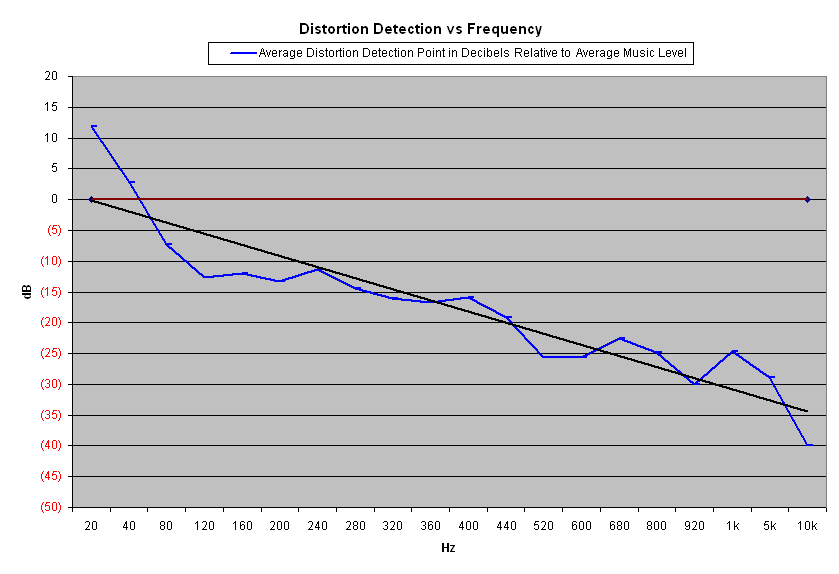- Thread Starter
- #21
I am a mechanical engineer.I do also agree with the earlier post regarding high quality engineering. Even if it’s inaudible, it’s interesting to see the art of the possible and I’d much rather give my money to someone who is trying very hard to build an excellent device than someone building just good enough.
It is generally considered foolish to make a product perform better than it needs to, particularly since it almost always is more expensive to do so.
Also adding .001% distortion to 5% is not going to make any difference.
I am shocked.Frequency matters a lot, that >5% is below 500Hz.

While this is not a peer-reviewed study, this is what Axiom Audio found:

5% (-26dB) becomes inaudible when below ~650Hz. That's just detecting it, so when it becomes subjectively harmful would be even higher.
As for DAC, Amir has shown that you can get super high SINAD for relatively very cheap, so there is no need to buy an expensive DAC with low SINAD, unless for some reason who like the looks or whathaveyou.
Admittedly I mainly listen to classical music but the vast bulk of the music I listen to has a LOT of information below 500Hz, usually more than half of it. It is quite normal for the level at frequencies >2kHz to be 40dB lower than the level at 250 Hz.

